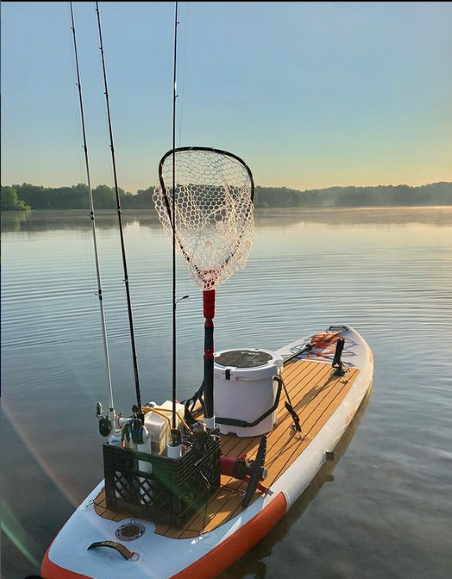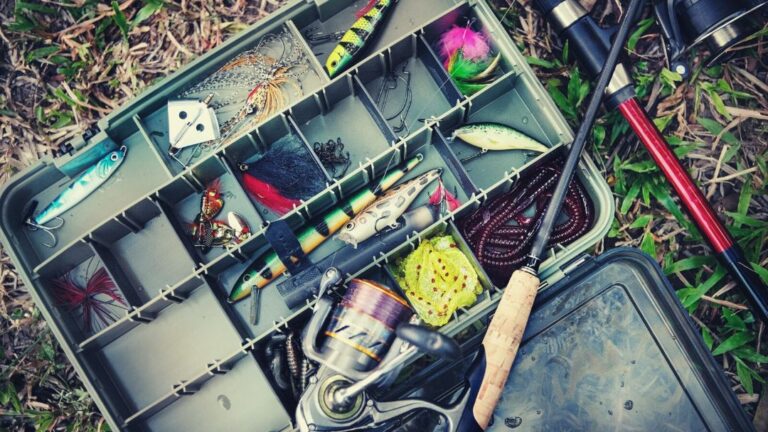How to Identify a Longbill Spearfish: Expert Tips & Tricks
Identifying a Longbill Spearfish is straightforward when you know what to look for. These fish have unique features that set them apart from other species.
Longbill Spearfish are fascinating creatures of the ocean. With their slender bodies and elongated bills, they are easily distinguishable. Recognizing a Longbill Spearfish is crucial for anglers and marine enthusiasts. It ensures proper identification, which is vital for conservation efforts.
This guide will help you spot these unique fish with confidence. By understanding their distinct characteristics, you can appreciate their role in the marine ecosystem. So, let’s dive into the details and learn how to identify a Longbill Spearfish.

Credit: www.marlinmag.com
Introduction To Longbill Spearfish
The Longbill Spearfish is a fascinating species for anglers and marine enthusiasts. Known for its elongated bill, this fish stands out in the ocean. Understanding its characteristics and habits can enhance your experience.
Species Overview
The Longbill Spearfish belongs to the billfish family. It has a sleek, elongated body. Its most distinctive feature is its long bill. This bill helps it hunt and navigate the waters. The fish can grow up to nine feet in length. Its coloration ranges from dark blue on top to a silvery white underside.
Habitat And Distribution
The Longbill Spearfish prefers warm, tropical waters. They are found in the Atlantic, Indian, and Pacific Oceans. Often, they stay near the surface or dive into deeper waters. They migrate based on water temperature and food availability.
These fish are not commonly found near shorelines. Instead, they inhabit open ocean areas. This makes encounters rare but exciting for deep-sea anglers.

Credit: www.takemefishing.org
Physical Characteristics
The Longbill Spearfish is a fascinating fish species. Its unique features make it easily identifiable. This section focuses on the key physical characteristics. Understanding these traits helps in recognizing this remarkable fish.
Size And Weight
Longbill Spearfish are smaller compared to other billfish. Adult Spearfish usually range from 30 to 50 pounds. Their length varies between 4 to 6 feet. These dimensions make them one of the more manageable catches in the billfish family.
Coloration And Patterns
The coloration of Longbill Spearfish is striking. They have a dark blue back which fades into a silver belly. This contrast makes them stand out in the water. There are also vertical stripes on the sides. These stripes are usually light blue or lavender. These patterns are helpful for identification.
Distinctive Features
Identifying a Longbill Spearfish can be easy if you know what to look for. Their distinctive features stand out, making them unique among other fish species. Knowing these features helps in quick identification.
Bill Shape And Length
The Longbill Spearfish gets its name from its bill. The bill is slender and long, making it easy to spot. It is usually around 18% of the fish’s body length. The bill is also slightly curved, adding to its unique look.
Fin Structure
Another distinctive feature is the fin structure. The dorsal fin is long and almost reaches the tail. It has a pointed tip, adding to its sleek appearance. The pectoral fins are short and rigid. They remain close to the body while swimming.
Below is a table summarizing these features:
| Feature | Description |
|---|---|
| Bill | Slender, long, curved |
| Dorsal Fin | Long, pointed, near tail |
| Pectoral Fins | Short, rigid, close to body |
Behavioral Traits
Understanding the behavioral traits of the Longbill Spearfish is crucial for identifying them. These traits include their feeding habits and movement patterns. Observing these behaviors can help you distinguish this species from other fish.
Feeding Habits
Longbill Spearfish are known for their distinct feeding habits. They primarily feed on small fish and squid. This species often hunts near the surface of the water.
They use their long bill to stun prey. They do this by slashing through schools of fish. Their diet mainly includes:
- Small fish
- Squid
- Crustaceans
Movement Patterns
The movement patterns of Longbill Spearfish are unique. They are known for their agility and speed. This fish often swims in open waters, avoiding coastal areas.
They migrate seasonally, following warm currents. These movements are influenced by their feeding and breeding needs. Here are some key points:
- Agile and fast swimmers
- Prefer open waters
- Seasonal migration
Observing these behavioral traits can help you correctly identify the Longbill Spearfish. Their feeding habits and movement patterns are distinctive and provide valuable clues.
Comparison With Similar Species
Identifying a Longbill Spearfish can be challenging. Many similar species exist in the ocean. This section will help you compare it with other species. We will look at the Shortbill Spearfish, Sailfish, and Marlin.
Shortbill Spearfish
The Shortbill Spearfish has a shorter bill compared to the Longbill Spearfish. Its body is also more streamlined. The Shortbill’s dorsal fin is lower and less pronounced. Look at the pectoral fins too. They are shorter in the Shortbill Spearfish. These differences are key to distinguishing between the two species.
Sailfish
The Sailfish is another species often confused with the Longbill Spearfish. Sailfish have a long, sail-like dorsal fin. This fin is much larger than that of a Longbill Spearfish. Sailfish also have a more slender body. Their bodies are more elongated compared to the Longbill Spearfish. These features make Sailfish easier to identify.
Marlin
Marlin are larger and heavier than Longbill Spearfish. They have a more robust body structure. Marlin’s bills are also much longer and stouter. Their dorsal fins are less pointed. The pectoral fins of Marlin are longer and more curved. These characteristics help differentiate Marlin from Longbill Spearfish.
Observation Techniques
Identifying a Longbill Spearfish requires keen observation and a few specific techniques. This type of fish, known for its elongated bill, can be tricky to spot in the wild. By using the right observation techniques, you can increase your chances of a successful sighting.
Best Viewing Locations
The Longbill Spearfish thrives in deep ocean waters. Coastal areas with clear waters are ideal. Look for them near underwater structures like reefs or shipwrecks. These spots provide ample food sources. Fishing charters in these areas often report sightings. Local guides can offer valuable tips on the best locations.
Seasonal Patterns
Longbill Spearfish follow specific seasonal patterns. They are more active during warmer months. Summer and late spring are the prime times for observation. During these months, they come closer to the surface. Their movements are more predictable. This makes it easier to spot them.
In colder months, they move to deeper waters. This makes them harder to find. Understanding these patterns can help you plan your observation trips better.
Photography Tips
Capturing the beauty of a Longbill Spearfish can be challenging. With the right tips, though, you can take stunning photos of this magnificent creature. Below are some key photography tips to help you get the best shot of a Longbill Spearfish.
Equipment Recommendations
To photograph a Longbill Spearfish, you need a good camera. A DSLR or mirrorless camera works best. These cameras offer better control over settings. A lens with a long focal length is also important. It allows you to capture the fish from a distance without disturbing it. Consider using a lens with a focal length of at least 300mm.
Another useful piece of equipment is a polarizing filter. This filter reduces glare on the water surface. It helps you get clearer shots of the fish. A tripod can also be helpful. It keeps your camera steady, especially in a moving boat.
Best Practices
When photographing the Longbill Spearfish, be patient. It may take time to get the perfect shot. Keep your camera ready at all times. The fish can appear suddenly.
Use a fast shutter speed. This helps you capture the quick movements of the fish. A shutter speed of 1/1000th of a second or faster is ideal. Adjust your camera settings to get the best exposure. Use a high ISO setting in low light conditions.
Focus on the eyes of the fish. Sharp eyes make your photos more engaging. Try different angles. Shoot from above, below, and from the side. This adds variety to your shots.
Respect the fish and its environment. Do not disturb the Longbill Spearfish. Maintain a safe distance. Enjoy the process of photographing this incredible creature.
Conservation Efforts
Longbill Spearfish are unique and fascinating marine creatures. Their preservation is crucial for maintaining marine biodiversity. Conservation efforts aim to protect these species from threats and ensure their survival for future generations.
Threats And Challenges
Longbill Spearfish face numerous threats. Overfishing is one of the major challenges. These fish are often caught accidentally in commercial fishing nets. This reduces their population.
Habitat destruction is another significant threat. Coastal development and pollution degrade their natural habitats. This makes it difficult for them to survive and reproduce.
Climate change also impacts Longbill Spearfish. Rising sea temperatures and ocean acidification affect their food sources and breeding grounds.
Protective Measures
Several protective measures are in place to conserve Longbill Spearfish. One effective strategy is the establishment of marine protected areas (MPAs). MPAs restrict fishing activities and protect habitats.
Sustainable fishing practices are also promoted. Fishermen are encouraged to use selective fishing gear. This reduces the accidental capture of Longbill Spearfish.
Research and monitoring are essential components of conservation efforts. Scientists study Longbill Spearfish populations and their habitats. This data helps in making informed conservation decisions.
Public awareness campaigns play a vital role. Educating the public about the importance of Longbill Spearfish conservation can drive community support and participation in conservation activities.
Collaborative efforts between governments, NGOs, and local communities are crucial. These collaborations ensure the effective implementation of conservation measures.
Conservation efforts require continuous support and adaptation. By addressing the threats and implementing protective measures, we can ensure the survival of Longbill Spearfish for future generations.
Expert Resources
Identifying a Longbill Spearfish can be a challenging task. Expert resources can provide invaluable assistance. These resources range from books and guides to online communities. Here, we explore some of the best places to find expert information.
Books And Guides
Books and guides offer detailed information on Longbill Spearfish. They often include high-quality images and descriptions. These resources can help you understand the unique features of this fish. Look for books written by marine biologists or seasoned fishermen.
Some popular guides include “The Fisherman’s Guide to Billfish” and “Marine Species Identification Manual.” These texts cover various aspects of the Longbill Spearfish. They provide insights on habitat, behavior, and physical characteristics. Using these guides can improve your identification skills.
Online Communities
Online communities are another valuable resource. Forums and social media groups bring together enthusiasts and experts. You can ask questions and share your findings. Experienced members often provide helpful advice and tips.
Websites like FishBase and The Billfish Foundation offer forums and discussion boards. These platforms allow you to connect with others who share your interest. Participating in these communities can enhance your understanding of the Longbill Spearfish. You might even find local groups with knowledge of your region’s fish species.

Credit: norrik.com
Frequently Asked Questions
What Is A Longbill Spearfish?
A Longbill Spearfish is a species of billfish known for its elongated bill. It is usually found in tropical and subtropical waters.
How Can You Identify A Longbill Spearfish?
You can identify a Longbill Spearfish by its long, slender bill and streamlined body. It also has a blueish-black color on its back.
Where Are Longbill Spearfish Commonly Found?
Longbill Spearfish are commonly found in tropical and subtropical waters. They are often seen in the Atlantic Ocean.
What Does A Longbill Spearfish Eat?
Longbill Spearfish primarily eat fish and squid. They use their long bill to slash at their prey.
Conclusion
Identifying a Longbill Spearfish can be simple with the right tips. Look for its long bill and slender body. Notice its distinct dorsal fin and streamlined shape. These features set it apart from other fish. Practice and patience will help you get better.
Happy fish spotting and enjoy the adventure!




